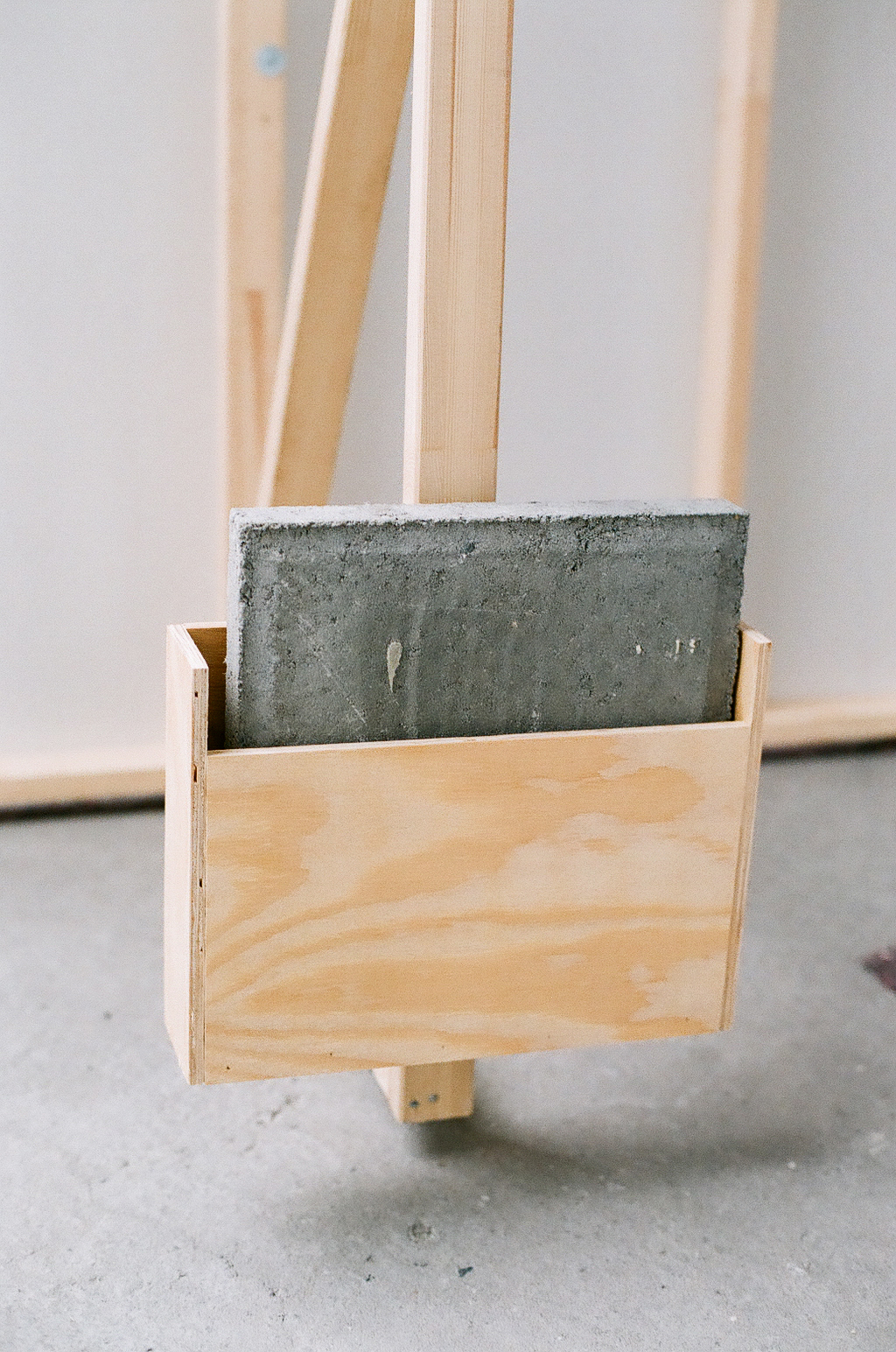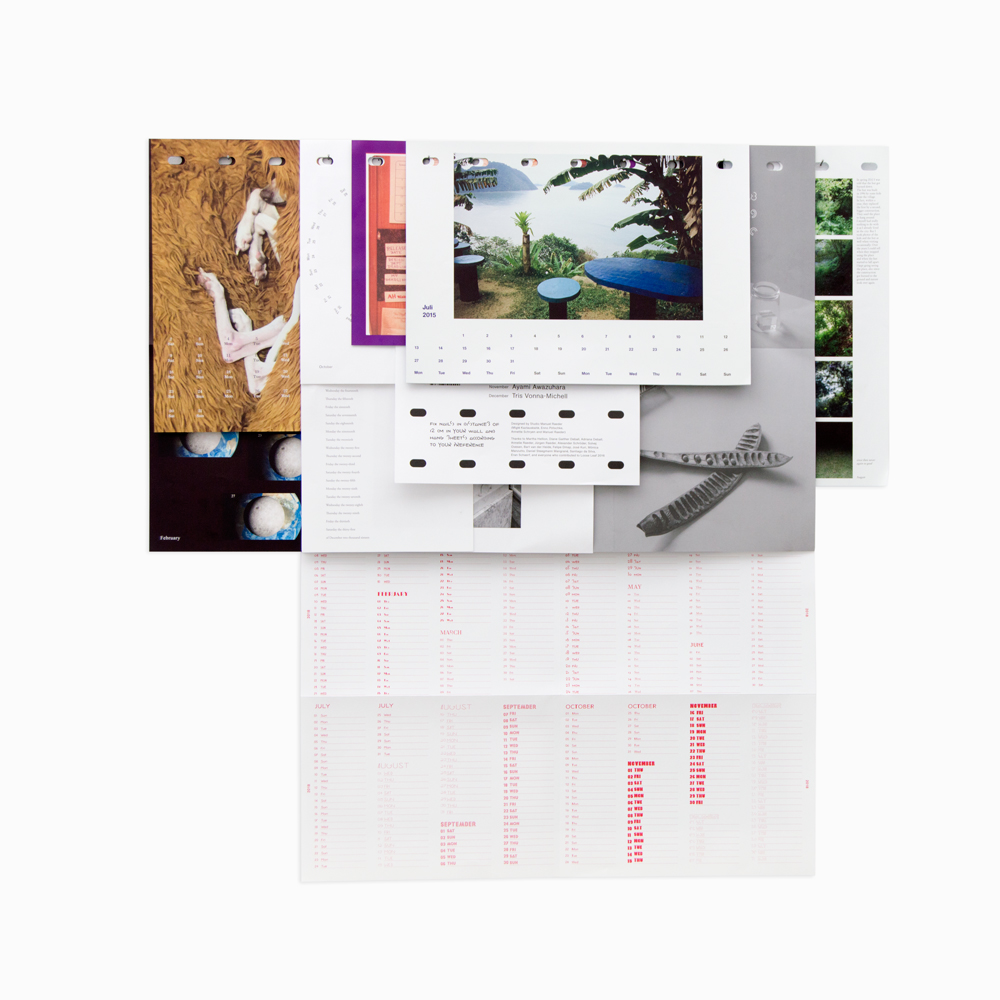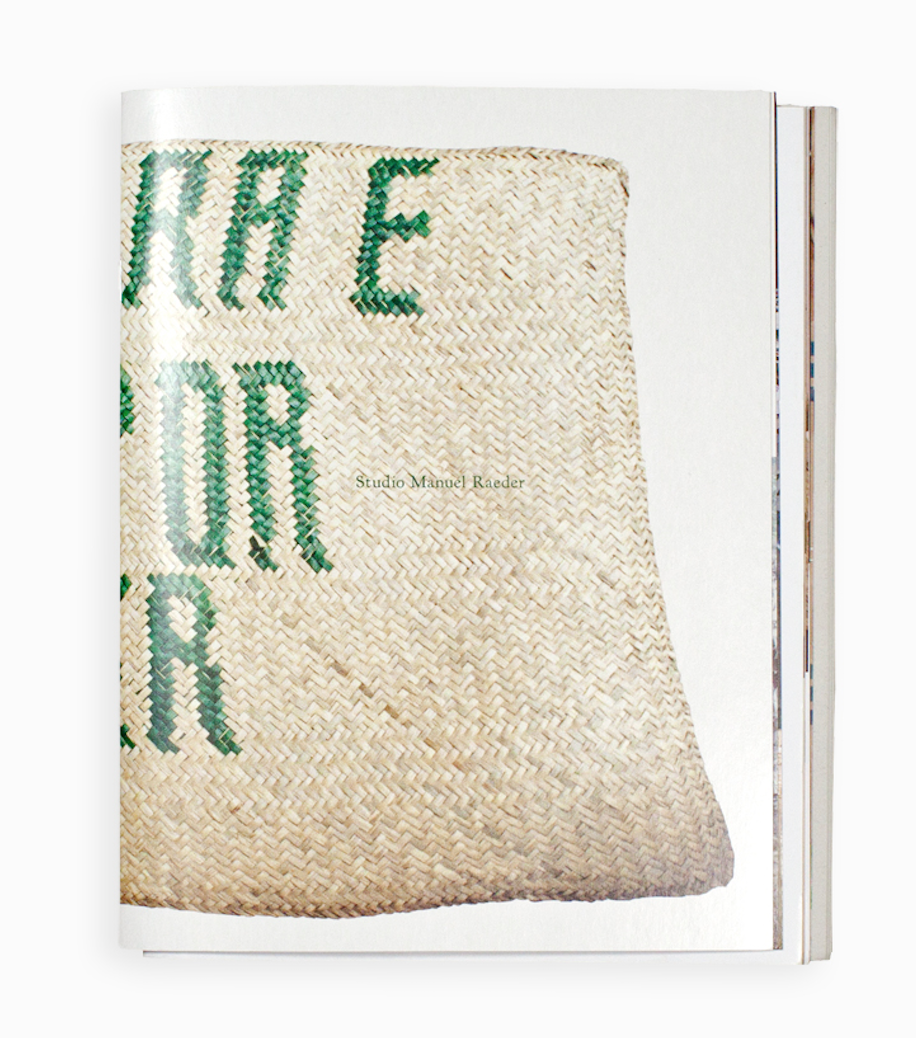Have you met... Manuel Raeder
Have you met... Manuel Raeder

Bpigs had the chance to meet up with Manuel Raeder from Bom Dia Boa Tarde Boa Noite while visiting Libros Mutantes in Madrid.
The all-round designer behind the German publishing house with the musical Portuguese name is certainly known to Berliners due to design endeavors such as the sustainable architecture of abc's first edition in Station Berlin in 2012 and its continuation in 2014.

 abc – art berlin contemporary
abc – art berlin contemporary
Studio Manuel Raeder for Centro de Diseño de Oaxaca
After taking a comprehensive look at his multiple projects, we talked with Manuel about the future of printed matter, unconventional books for children and how it is to collaborate with artists who become friends while working together.

1785/87/90-2010 by Leonor Antunes
What are major influences to you as a designer and book publisher?
When I started out working as a designer, conceptual art of the sixties was very influential to me. From the very beginning, I have worked in conceptual art book projects close to the aesthetics of movements such as Fluxus.
From that era, I particularly admire Hansjörg Mayer, who published books with artists like Dieter Roth or Richard Hamilton. Back in the sixties, the term “designer” was not really widespread in this field, so he was considered a printer and publisher. That mentality has shifted though.
In art book fairs like Libros Mutantes you can find lots of books that are the result of a collaborative effort between artists and designers. Back in the sixties, seventies and even the eighties, books were often entirely made by artists. Nowadays, curators, designers, and editors are involved in the process, and this also affects the result, generating very different forms of art books.
What kind of art books can we find?
There are many different ways to produce books. In this fair, many of the books that you can find have been made by the artists themselves.
It is difficult to put all books in the same box; they respond to the function that they have: there are catalogs produced by museums and powerful institutions, independent art publications; while sometimes the book is part of an artwork, and sometimes it is an artwork in itself. In that sense, we can talk of different species of books
Why is it so meaningful for you to explore book publishing in the digital era?
Book publishing is a very exciting field for me to work in because it allows a wide spectrum of discourse and inventing. There are lots of things that you can do; lots of experiments that are possible when using books as a medium to transport writings and information, or to document artworks or history in a way that exceeds the limitations of a classic museum documentation catalog.
I think that traditional book publishing is never going to disappear. However, we cannot predict how digitally stored documents are going to respond in 10 years.
 Loose Leaf Wall Calendar 2016 by Studio Manuel Raeder
Loose Leaf Wall Calendar 2016 by Studio Manuel Raeder
In which ways do you see accelerationism affecting the way we relate ourselves to books and the way we read them?
The encounter with printed matter is obviously changing with the times; we now read at different speeds, and the way we consume reading material also depends on their very own nature. Magazines have a pretty short shelf life before ending up on a pile, and newspapers are mostly read digitally these days. There is where you realize that our relationship towards some certain reading materials has shifted. On the other hand, there is a growing interest in books with an added value; books that people want to keep, or titles that they would like to get in a nice edition or a very good print.
Same as there are more and more nice places with delicious handmade food and home brewed coffee popping out, there is also a more careful and personal approach to book publishing and collecting. It has become more visible because people are now more interested in having things that are more unique, more individual, opposed to mass-produced goods.
Do you see art book fairs as an effective platform in order to gain visibility?
There is a growing interest in book fairs at the moment, especially for artists books.
Young people want to relate to things that have been produced by someone that they can also meet in person at these events; someone who has made a unique product with love.
This physical attachment to books is still very present for many people, but of course it is changing. Younger generations haven't had this traditional relationship to paper but what they have is the ability to feel impressed about it. They feel attracted to it and suddenly feel like collecting books because they think it would be nice to have them, as objects.
How do you feel about book fairs like Libros Mutantes? What do you learn by attending them?
I have been doing Bom Dia Boa Tarde Boa Noite for 5 years now. Before that, I hardly ever went to any book fair because I was more into second hand books that I would get from antique stores. Since I run the publishing house and have to attend fairs, my perception of who buys and reads these books has changed a lot.
Before Bom Dia, I was making books that were landing directly in bookstores. Sometimes, while chatting with someone at a party, they would recognize my works and they would give me their opinion, but I really didn't have much contact with the people buying them otherwise.
The good thing about book fairs is the exchange; people come and say “Oh, this book is very nice! I bought it like two years ago...”. They also ask questions and give you feedback. That kind of personal contact is really beautiful and enriching for me. It also helps me to think about how to make books.
 La letra E está por doquier
La letra E está por doquier
During your presentation, we saw glimpses of your work for multidisciplinary fashion studio Bless. That looks like a fun collaboration. How did you feel working in that field?
When we started collaborating with Bless, I had no experience working in fashion whatsoever but they approached me and we at Studio Manuel Raeder started doing the graphic design for them. We also developed a personal relationship with the and can say that we have now been working very closely for the past 13 years. In that sense, it has been very interesting to see them evolve over the time.
On Bom Dia, we have published Lookbook Collaborations on 2012, an edition of 10 sets of their lookbooks inside already existing magazines.
What are Bom Dia Boa Tarde Boa Noite's next projects?
We are currently working on an art edition by artist Leonor Antunes, with whom we have previously worked together. Back in 2013, we published “villa, how to use”, a documentation of her exhibition at the Museo de Arte Comtemporáneo de Serralves. On this occasion, we are doing something completely different: a meter-long printed edition of a hanging artwork with different layers of transparent paper overlapping. We have also done this work in miniature size for children.
Regarding Bom Dia Kinder, how is it like publishing books for kids?
We really wanted to publish books for children with a different take, far from the usual corny aesthetics present in this kind of publications, so we asked some artists to work with us and they came up with their very personal concepts. These artists are either parents or have always wanted to do something for kids. They come up with very different ideas, completely different from the usual kind of corny narratives that you could expect.
So far, we have published a coloring book by Oaxaca-based artist and tattooist Dr. Lakra.
I saw that he made coloring fanzines with his own tattoo designs for his kids.
We published a book with his illustrations because they are edgy and we liked them. The book turned out to be full of weird animals, people covered in tattoos, and even naked ladies hugging lobsters.
Could you tell us about a book you are really into at the moment?
I'm currently reading Zen and Japanese Culture by Daisetz T. Suzuki, a book about zen that has been very influential to artists such as John Cage. Suzuki was a zen master who wrote about meditation and its relationship with other traditional Japanese cultural forms such as calligraphy, pottery or textile.
MUSIC BONUS In case you were wondering where the name Bom Dia Boa Tarde Boa Noite comes from...